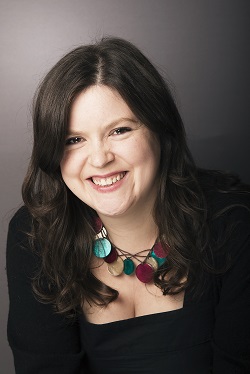It isn’t always easy to predict a paradigm shift—even when you’re on the precipice of one
Day, S., Nothing new to be discovered? Geoscientist
29 (10), 5, 2019
https://doi.org/doi: 10.1144/geosci2019-053,
Download the pdf here
 ‘The year which has passed has not indeed been marked by any…striking discoveries.’
‘The year which has passed has not indeed been marked by any…striking discoveries.’
So said the President of the Linnean Society in May 1859, in a summary of a year that saw the reading of both Darwin and Wallace’s papers on the theory of evolution by natural selection.
A few decades later in 1894, Albert Michelson (of Michelson-Morley experiment fame) declared: ‘It seems probable that most of the grand underlying principles have been firmly established…an eminent physicist remarked that the future truths of physical science are to be looked for in the sixth place of decimals.’ Michelson was speaking just a few years before the quantum revolution which transformed physics. (It turns out this quote is probably the original of the extremely famous, yet apparently fictitious Lord Kelvin quote, “There is nothing new to be discovered in physics now. All that remains is more and more precise measurement.”)
It isn’t always easy to predict a paradigm shift—even when you’re on the precipice of one. Geology experienced its own—the 50th anniversary of which was celebrated by this Society in 2017—in the plate tectonics revolution of the mid-twentieth century. For many, the news came as a bolt out of the blue—geoscientists have spoken since of undergraduate syllabuses changing seemingly overnight, and confused students wondering how to refer to the new theory in their exam papers. As we stood on the brink of a paradigm shift there were those, perhaps, who believed geoscience had experienced all of its revolutions, and had become a science whose future truths ‘are to be looked for in the sixth place of decimals.’
Earlier this year, the EGU hosted a session on ‘Peak Geoscience: Uncertainty, unknowns and the future of geoscience’. The ‘flurry of major breakthroughs’ witnessed by geoscience in the 19th and 20th centuries, it was noted, has slowed—are we now in a period of synthesis, or are new developments on the horizon? Both of this month’s features take a look at the past, present and future of geoscience, and the new technology that might hold the key to the next revolutionary discoveries.
Meanwhile, change lies ahead for Geoscientist Magazine over the next few months. Geoscientist’s Editor Amy Whitchurch is currently on maternity leave, and has bravely handed over the reins to me in the meantime. Taking on the role of ‘locum’ Editor feels like coming full circle—writing for Geoscientist magazine was one of my first tasks on joining the Society’s staff in 2008, and it’s an honour to have been entrusted with its pages now. Huge thanks to Amy for all her hard work in getting me up to speed over the past few weeks—I hope to do her, and the magazine, justice.
For the past 11 years, I’ve been part of the Society’s External Relations team, initially as Earth Science Communicator and latterly Head of Media Relations and Outreach—roles that involved working with the geoscience community on all manner of communication projects, from press releases and media enquiries to outreach events and interviews. My first editorial seems like a good opportunity to say thank you to everyone who helped me out with any and all of the above—and to encourage you to continue to do so! Whether you’ve written for these pages before or not, I hope you’ll consider picking up your pen—I’d love to hear from you.
SARAH DAY FGS, EDITOR
[email protected]
@geowriter